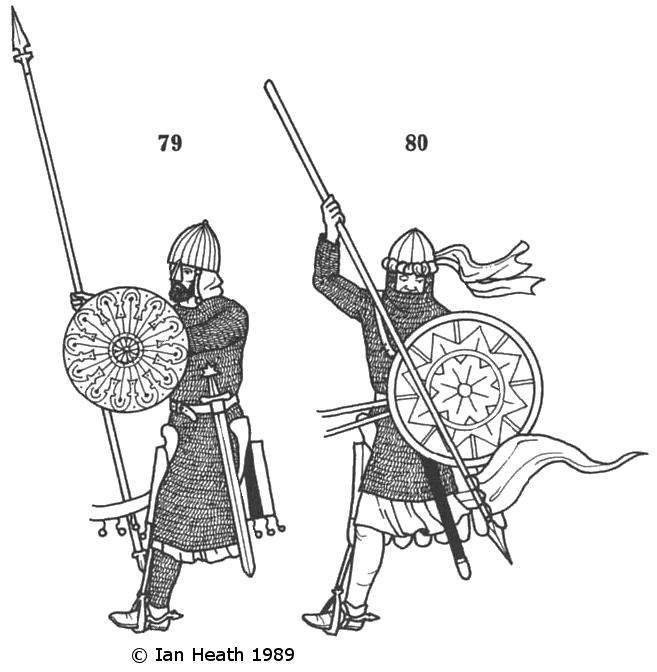
Try Amazon Audible Plus
ANDALUSIAN HEAVY CAVALRYMEN, 11th-12th CENTURIES
An extract from Armies of Feudal Europe 1066-1300by Ian Heath
 | |
| [Based on the Silos Beatus Codex, Spain, 1090-1109AD] | [Based on a capital at Estella in Navarre with Farragut & Roland, last third of the 12th century] |
